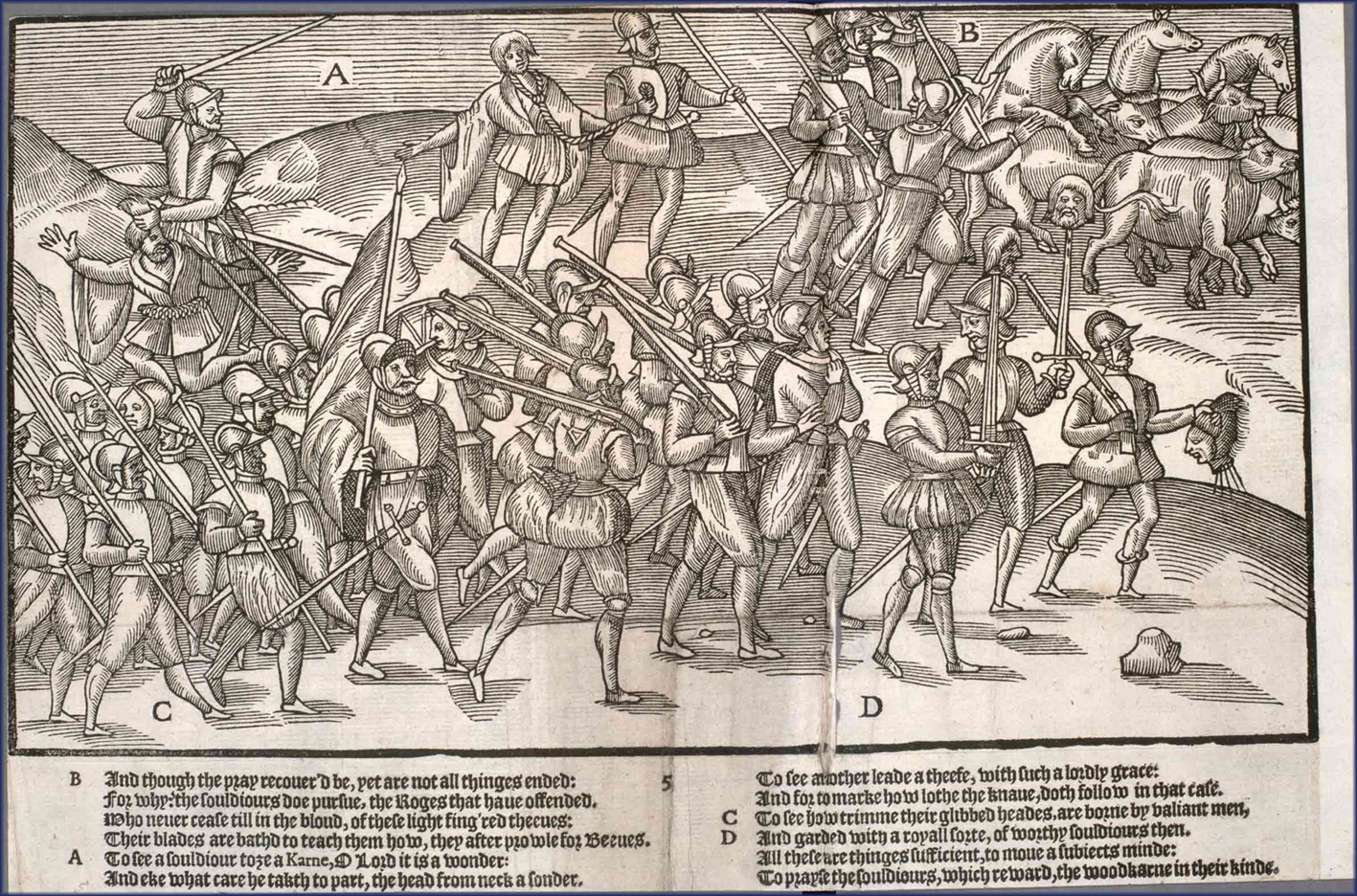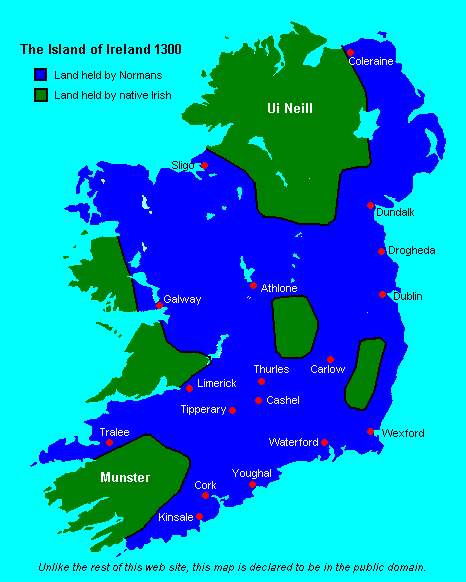|
Anne Sarsfield, Viscountess Sarsfield
Anne Sarsfield, Viscountess Sarsfield was an Irish aristocrat of the 16th and 17th centuries. She was born Anne Bagenal, and should not be confused with her niece Anne Bagenal the daughter of her brother Henry. She was the daughter of Sir Nicholas Bagenal, an English-born adventurer who had fled to Ireland following accusations of murder in his native Staffordshire. He received the patronage of the Gaelic lord Conn O'Neill, 1st Earl of Tyrone and established himself in Newry. Her mother was a Welsh woman Eleanor Griffith.Morgan p.126 Amongst her siblings were Sir Henry Bagenal, the Marshal of Ireland, and Mabel Bagenal, the wife of Hugh O'Neill, Earl of Tyrone whose forces killed Sir Henry at the 1598 Battle of the Yellow Ford during Tyrone's Rebellion. Anne's first marriage was to Sir Dudley Loftus, the eldest son of Adam Loftus, the Archbishop of Dublin a leading figure in the Church of Ireland who also held political office in the Irish Government. Such dynastic alliance ... [...More Info...] [...Related Items...] OR: [Wikipedia] [Google] [Baidu] |
Nicholas Bagenal
Sir Nicholas Bagenal (; - February 1591) was an English soldier and politician who became Marshal of the Irish Army (Kingdom of Ireland), Irish Army during the Tudor era. Early life Nicholas Bagenal was born around 1509. He was the second son of John Bagenal (died 1558), a tailor who served as Mayor of Newcastle-under-Lyme, by his wife Eleanor Whittingham of Middlewich, Cheshire. Eleanor was a second cousin of William Whittingham, Dean of Durham. Nicholas's elder brother, Sir Ralph Bagenal, was a courtier of Henry VIII. In 1538, Nicholas fled to Ireland to escape justice for killing a man in the Staffordshire village of Leek, Staffordshire, Leek; his two brothers were apparently also involved in this crime. In Ireland, he became acquainted with Con O'Neill, 1st Earl of Tyrone and on 7 December 1542 the Irish council, at the suit of Tyrone, begged the King to pardon Bagenal. Bagenal returned to England in April 1544 and took part in the campaign in France in the following summ ... [...More Info...] [...Related Items...] OR: [Wikipedia] [Google] [Baidu] |
Kingdom Of Ireland
The Kingdom of Ireland (; , ) was a dependent territory of Kingdom of England, England and then of Kingdom of Great Britain, Great Britain from 1542 to the end of 1800. It was ruled by the monarchs of England and then List of British monarchs, of Great Britain, and was Dublin Castle administration, administered from Dublin Castle by a viceroy appointed by the English king: the lord deputy of Ireland. Aside from brief periods, the state was dominated by the Protestant English (or Anglo-Irish people, Anglo-Irish) minority, known as the Protestant Ascendancy. The Protestant Church of Ireland was the state church. The Parliament of Ireland was composed of Anglo-Irish nobles. From 1661, the administration controlled an Irish Army (1661–1801), Irish army. Although ''de jure'' styled as a kingdom, for most of its history it was ''de facto'' an English Dependent territory, dependency (specifically a viceroyalty). This status was enshrined in the Declaratory Act 1719, also known as th ... [...More Info...] [...Related Items...] OR: [Wikipedia] [Google] [Baidu] |
Irish People Of Welsh Descent
Irish commonly refers to: * Someone or something of, from, or related to: ** Ireland, an island situated off the north-western coast of continental Europe ***Éire, Irish language name for the island and the sovereign state *** Erse (other), Scots language name for the Irish language or Irish people ** Republic of Ireland, a sovereign state ** Northern Ireland, a constituent unit of the United Kingdom of Great Britain and Northern Ireland * Irish language, a Celtic Goidelic language of the Indo-European language family spoken in Ireland * Irish English, set of dialects of the English language native to Ireland * Irish people, people of Irish ethnicity Irish may also refer to: Places * Irish Creek (Kansas), a stream in Kansas * Irish Creek (South Dakota), a stream in South Dakota * Irish Lake, Watonwan County, Minnesota * Irish Sea, the body of water which separates the islands of Ireland and Great Britain People * Irish (surname), a list of people * William Irish, pse ... [...More Info...] [...Related Items...] OR: [Wikipedia] [Google] [Baidu] |
People From County Armagh
The term "the people" refers to the public or common mass of people of a polity. As such it is a concept of human rights law, international law as well as constitutional law, particularly used for claims of popular sovereignty. In contrast, a people is any plurality of persons considered as a whole. Used in politics and law, the term "a people" refers to the collective or community of an ethnic group or nation. Concepts Legal Chapter One, Article One of the Charter of the United Nations states that "peoples" have the right to self-determination. Though the mere status as peoples and the right to self-determination, as for example in the case of Indigenous peoples (''peoples'', as in all groups of indigenous people, not merely all indigenous persons as in ''indigenous people''), does not automatically provide for independent sovereignty and therefore secession. Indeed, judge Ivor Jennings identified the inherent problems in the right of "peoples" to self-determination, as i ... [...More Info...] [...Related Items...] OR: [Wikipedia] [Google] [Baidu] |
Year Of Death Unknown
A year is a unit of time based on how long it takes the Earth to orbit the Sun. In scientific use, the tropical year (approximately 365 solar days, 5 hours, 48 minutes, 45 seconds) and the sidereal year (about 20 minutes longer) are more exact. The modern calendar year, as reckoned according to the Gregorian calendar, approximates the tropical year by using a system of leap years. The term 'year' is also used to indicate other periods of roughly similar duration, such as the lunar year (a roughly 354-day cycle of twelve of the Moon's phasessee lunar calendar), as well as periods loosely associated with the calendar or astronomical year, such as the seasonal year, the fiscal year, the academic year, etc. Due to the Earth's axial tilt, the course of a year sees the passing of the seasons, marked by changes in weather, the hours of daylight, and, consequently, vegetation and soil fertility. In temperate and subpolar regions around the planet, four seasons ar ... [...More Info...] [...Related Items...] OR: [Wikipedia] [Google] [Baidu] |
17th-century Irish People
The 17th century lasted from January 1, 1601 (represented by the Roman numerals MDCI), to December 31, 1700 (MDCC). It falls into the early modern period of Europe and in that continent (whose impact on the world was increasing) was characterized by the Baroque cultural movement, the latter part of the Spanish Golden Age, the Dutch Golden Age, the French '' Grand Siècle'' dominated by Louis XIV, the Scientific Revolution, the world's first public company and megacorporation known as the Dutch East India Company, and according to some historians, the General Crisis. From the mid-17th century, European politics were increasingly dominated by the Kingdom of France of Louis XIV, where royal power was solidified domestically in the civil war of the Fronde. The semi-feudal territorial French nobility was weakened and subjugated to the power of an absolute monarchy through the reinvention of the Palace of Versailles from a hunting lodge to a gilded prison, in which a greatly expande ... [...More Info...] [...Related Items...] OR: [Wikipedia] [Google] [Baidu] |
16th-century Irish Nobility
The 16th century began with the Julian calendar, Julian year 1501 (represented by the Roman numerals MDI) and ended with either the Julian or the Gregorian calendar, Gregorian year 1600 (MDC), depending on the reckoning used (the Gregorian calendar introduced a lapse of 10 days in October 1582). The Renaissance in Italy and Europe saw the emergence of important artists, authors and scientists, and led to the foundation of important subjects which include accounting and political science. Copernicus proposed the Copernican heliocentrism, heliocentric universe, which was met with strong resistance, and Tycho Brahe refuted the theory of celestial spheres through observational measurement of the SN 1572, 1572 appearance of a Milky Way supernova. These events directly challenged the long-held notion of an immutable universe supported by Ptolemy and Aristotle, and led to major revolutions in astronomy and science. Galileo Galilei became a champion of the new sciences, invented the first ... [...More Info...] [...Related Items...] OR: [Wikipedia] [Google] [Baidu] |
William Sarsfield, 2nd Viscount Sarsfield
William is a masculine given name of Germanic origin. It became popular in England after the Norman conquest in 1066,All Things William"Meaning & Origin of the Name"/ref> and remained so throughout the Middle Ages and into the modern era. It is sometimes abbreviated "Wm." Shortened familiar versions in English include Will or Wil, Wills, Willy, Willie, Bill, Billie, and Billy. A common Irish form is Liam. Scottish diminutives include Wull, Willie or Wullie (as in Oor Wullie). Female forms include Willa, Willemina, Wilma and Wilhelmina. Etymology William is related to the German given name ''Wilhelm''. Both ultimately descend from Proto-Germanic ''*Wiljahelmaz'', with a direct cognate also in the Old Norse name ''Vilhjalmr'' and a West Germanic borrowing into Medieval Latin ''Willelmus''. The Proto-Germanic name is a compound of *''wiljô'' "will, wish, desire" and *''helmaz'' "helm, helmet".Hanks, Hardcastle and Hodges, ''Oxford Dictionary of First Names'', Oxford Unive ... [...More Info...] [...Related Items...] OR: [Wikipedia] [Google] [Baidu] |
Old English (Ireland)
Norman Irish or Hiberno-Normans (; ) is a modern term for the descendants of Normans, Norman settlers who arrived during the Anglo-Norman invasion of Ireland in the 12th century. Most came from Anglo-Normans, England and Cambro-Normans, Wales. They are distinguished from the native Gaelic Ireland, Gaelic Irish; although some Normans eventually became Gaelicised. The Hiberno-Normans were a feudal aristocracy and merchant oligarchy who controlled the Lordship of Ireland. The Hiberno-Normans were associated with the Gregorian Reform of the Catholic Church in Ireland and contributed to the emergence of a Hiberno-English dialect. Some of the most prominent Hiberno-Norman families were the House of Burke, Burkes (de Burghs), Butler dynasty, Butlers, and FitzGerald dynasty, FitzGeralds. One of the most common Irish surnames, Walsh (surname), Walsh, derives from Welsh Normans who arrived in Ireland as part of this group. Some Norman families were said to have become "more Irish than t ... [...More Info...] [...Related Items...] OR: [Wikipedia] [Google] [Baidu] |
Chief Justice Of The Irish Common Pleas
The chief justice of the Common Pleas for Ireland was the presiding judge of the Court of Common Pleas in Ireland, which was known in its early years as the Court of Common Bench, or simply as "the Bench", or "the Dublin bench". It was one of the senior courts of common law in Ireland, and was a mirror of the Court of Common Pleas in England. The Court of Common Pleas was one of the "four courts" which sat in the building in Dublin which is still known as the Four Courts, apart from a period in the fourteenth century when it relocated to Carlow Carlow ( ; ) is the county town of County Carlow, in the south-east of Republic of Ireland, Ireland, from Dublin. At the 2022 census of Ireland, 2022 census, it had a population of 27,351, the List of urban areas in the Republic of Ireland, ..., which was thought, wrongly as it turned out, to be both more central and more secure for the rulers of Norman Ireland. According to Francis Elrington Ball, the court was fully operation ... [...More Info...] [...Related Items...] OR: [Wikipedia] [Google] [Baidu] |




